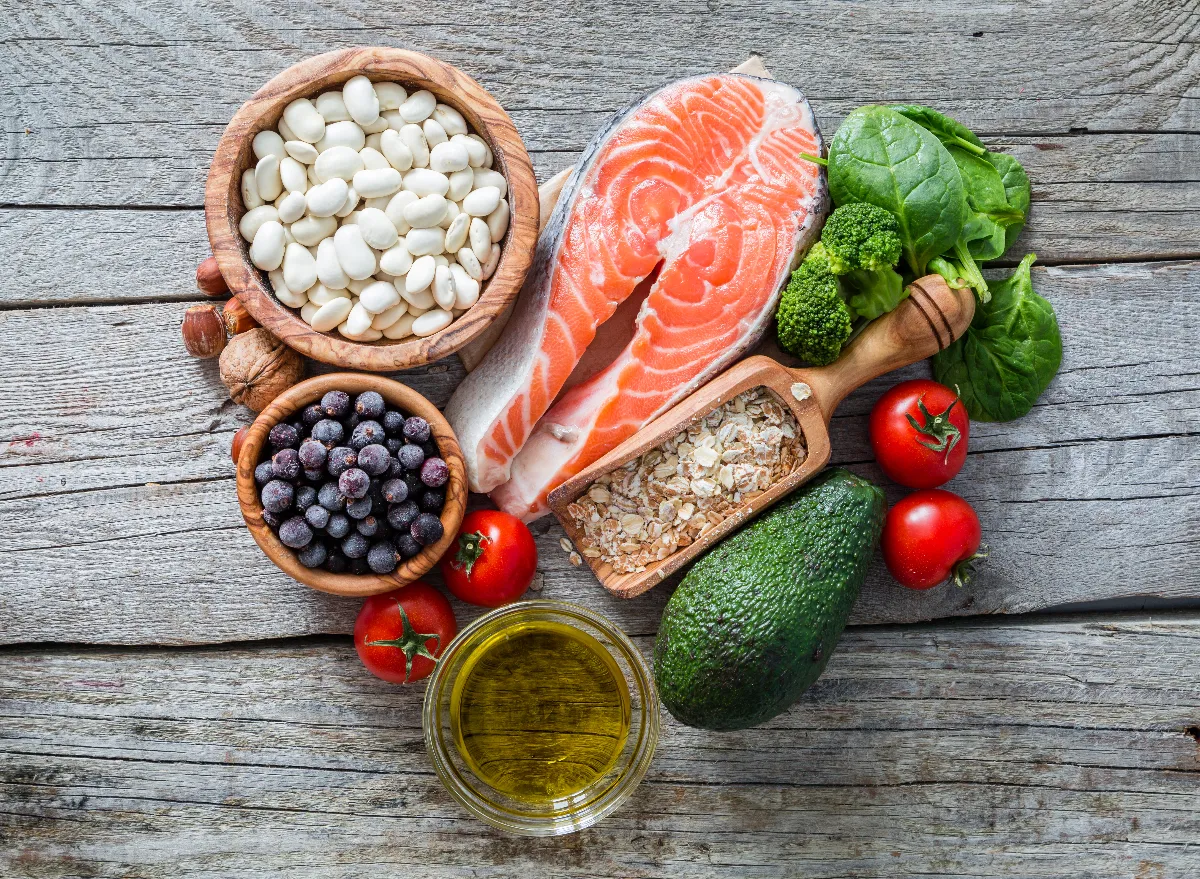The Most Crucial Eating Habit for Heart Disease

Ever heard a greasy burger-and-fries meal referred to as a “heart attack on a plate?” Though a single high-fat meal probably won’t immediately send you to the ER with a heart attack, your diet clearly has a major impact on your cardiovascular health. If you’ve been diagnosed with heart disease (or know you’re at risk of developing it), it’s smart to be mindful of the foods you eat.
More specifically, it’s smart to be mindful of how much you eat. Of all the recommendations for a heart-healthy diet, the one that may make the most impact is keeping your portions under control. While other diet tips—such as consuming more fruits and vegetables, lean proteins, whole grains, and healthy fats—are all well worthy of following, a heart-healthy diet begins with eating the right amounts.
In fact, when the American Heart Association released its 2021 guidelines for improving cardiovascular health, its first dietary recommendation had to do with adjusting caloric intake. In their words, to promote cardiometabolic health, people should “adjust energy intake and expenditure to achieve and maintain a healthy body weight.” Controlling the portions of food you eat at meals and snacks is a surefire path toward keeping your weight in a healthy range.

You may wonder what the big deal is about eating moderate portions and watching the number on the scale. For heart disease, isn’t it more important to keep your arteries clear of harmful saturated fats or blood pressure-spiking sodium? Granted, these dietary strategies are important parts of your heart health toolkit—but maintaining a healthy weight might be even more critical.
According to a large 2018 study, excess body weight significantly increased the risk of developing cardiovascular disease (especially at a young age). Carrying extra pounds even upped the likelihood of passing away from heart disease.
The connection between how much you eat and your chances of heart disease comes down to the ways your weight affects cardiovascular risk factors. Experts have long known that a higher BMI can cause high blood pressure, for example. And elevated weight increases your likelihood of developing high cholesterol and diabetes, two other major contributors to heart disease. Meanwhile, obesity can cause heart muscle injury—even in the absence of other risk factors.
So exactly how do you go about portioning your meals for a healthier heart? There are so many ways—and some of them are even sort of fun (we promise)! Eating off of smaller plates and dishes, for example, can provide visual cues that give the impression of a satisfying portion. Try investing in a set of attractive shrink-rayed dishes you love to look at. Some plates even come pre-portioned, Bento-style, with sections for each food group or macronutrient.
Food journaling or food tracking can also keep you aware of the amounts you’re taking in. If you’re the pen and paper type, consider writing down the foods you eat each day with the approximate amounts. Or, if you prefer a digital experience, check out tracking apps like Weight Watchers or My Fitness Pal.
Some people also benefit from getting familiar with a hand-sized portion control strategy. The idea goes that parts of your hand can serve as a visual aid. An appropriate serving of meat is the size of your palm, for example, and the tip of your thumb is a good indicator for portioning fats like butter or mayo. The more you make portion control a habit, the more you’ll see results for your weight—and your heart.









